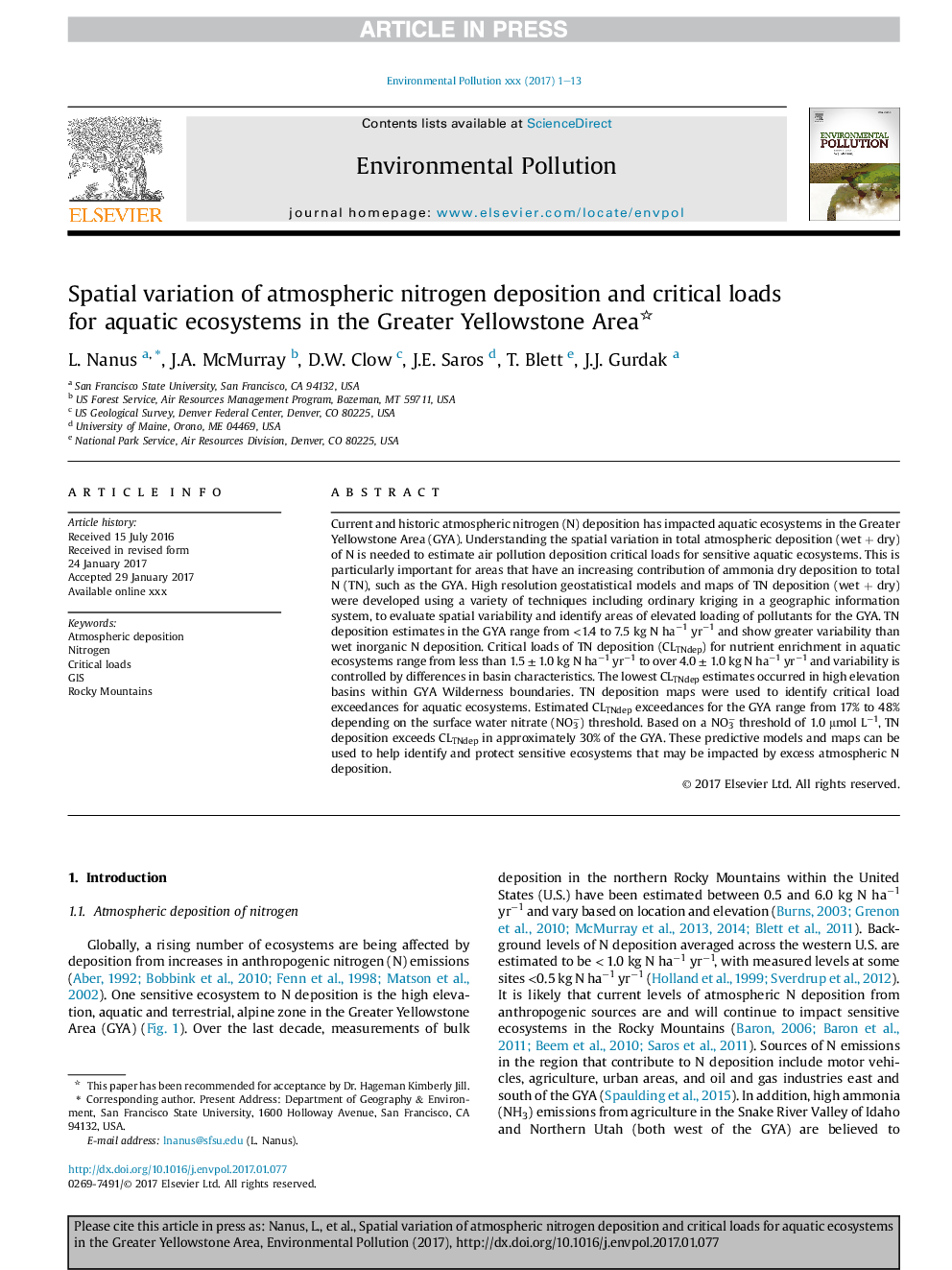| Article ID | Journal | Published Year | Pages | File Type |
|---|---|---|---|---|
| 5749346 | Environmental Pollution | 2017 | 13 Pages |
Abstract
Current and historic atmospheric nitrogen (N) deposition has impacted aquatic ecosystems in the Greater Yellowstone Area (GYA). Understanding the spatial variation in total atmospheric deposition (wet + dry) of N is needed to estimate air pollution deposition critical loads for sensitive aquatic ecosystems. This is particularly important for areas that have an increasing contribution of ammonia dry deposition to total N (TN), such as the GYA. High resolution geostatistical models and maps of TN deposition (wet + dry) were developed using a variety of techniques including ordinary kriging in a geographic information system, to evaluate spatial variability and identify areas of elevated loading of pollutants for the GYA. TN deposition estimates in the GYA range from <1.4 to 7.5 kg N haâ1 yrâ1 and show greater variability than wet inorganic N deposition. Critical loads of TN deposition (CLTNdep) for nutrient enrichment in aquatic ecosystems range from less than 1.5 ± 1.0 kg N haâ1 yrâ1 to over 4.0 ± 1.0 kg N haâ1 yrâ1 and variability is controlled by differences in basin characteristics. The lowest CLTNdep estimates occurred in high elevation basins within GYA Wilderness boundaries. TN deposition maps were used to identify critical load exceedances for aquatic ecosystems. Estimated CLTNdep exceedances for the GYA range from 17% to 48% depending on the surface water nitrate (NO3â) threshold. Based on a NO3â threshold of 1.0 μmol Lâ1, TN deposition exceeds CLTNdep in approximately 30% of the GYA. These predictive models and maps can be used to help identify and protect sensitive ecosystems that may be impacted by excess atmospheric N deposition.
Related Topics
Life Sciences
Environmental Science
Environmental Chemistry
Authors
L. Nanus, J.A. McMurray, D.W. Clow, J.E. Saros, T. Blett, J.J. Gurdak,
